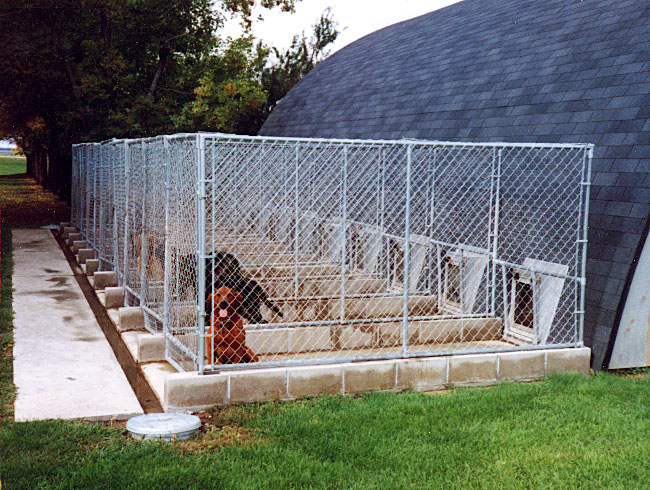Septic system can help make your hunting companion a happy camper
For dog owners, there’s nothing more detestable than having to clean up after their pets.
A dirty kennel not only looks and smells bad, it also can be a breeding ground for numerous insects and bacterial and fungal growths.
But a carefully designed septic system can eliminate those problems and probably will make your hunting companion happier as well.
Before considering whether to put in a septic system, an owner needs to find out if the soil will ensure proper drainage.
If you have heavy clay soil, don’t put it in. Heavy clay does not have the ability to absorb water. It only will create a bacterial problem. Loamy or sandy soil provides the best drainage. The local Natural Resource Service should be able to tell you if the soil is suitable, and some offices even will send someone out to inspect the site.
After an appropriate site is chosen, the next step would be to pour the concrete kennel run. A 4-foot-by-10-foot floor (4 inches thick) with concrete blocking allows for easy washing and scrubbing. A 2-foot-by-6-foot gutter is installed at the base of each run. This gutter will be able to carry material from a hosed-down kennel floor to the sewage system.
Details for Complete Kennel System and Other Gun Dog Tips
The sewage system should consist of a large galvanized garbage can, set inside a hole, with approximately 2 inches sticking out of the ground. The sewage tank should have:
- A 6-by-4-inch inlet hole that allows access from the gutter.
- Half-inch holes drilled down its side and its bottom cut out.
- An attachable 4-inch perforated sewer distribution pipe that is placed inside a trench that measures 6 inches wide, 10 feet long, and 2 feet deep. A rental company trencher works nicely for this job.
Clean rock should be placed around the can and on the bottom 12 to 18 inches of the trench, beneath the pipe.
Solid materials will settle in the tank, while the water will flow through the precut tank holes and into the distribution pipe, where it will settle into the soil.
The biggest advantage of this system is that you eliminate kennel urine and stool byproduct smells, but more importantly, bacteria and parasite problems. A galvanized can will last on the average of 10 years.
One septic system can handle about five kennels and needs to be cleaned out only once a year. I recommend cleaning a kennel run at least twice a day.
The biggest limitation is that it won’t work in the winter, because everything will freeze up. To get rid of urine or smelly fecal materials the rest of the year, it’s the answer.
